
Teaching and learning resources for the construction industry with NVQ and Diploma Assessment Criteria
Unit 206 Construct cavity walling forming masonry structures
The aim of this unit is to provide the learner with the
knowledge and skills to construct walling to form masonry structures
The learner will:
A lot of effort and expense goes into building a brick wall, which can be quite easily damaged by rain, frost and extreme heat during the summer months.
Bricklayers must be prepared at short notice to cover their work against sudden inclement weather.
At the end of the day, bricklayers also protect their work overnight ready for the following day.

Protecting Brickwork Against Weather
Bricklayers expect rain or even hail or snow to interrupt their work.
They may be only temporarily discomforted but their interrupted work can be permanently disfigured unless protected.
The causes are ‘inevitable, the results distressing, but protection is simple, requiring only forethought and preparation.
Even light rain falling on newly built brickwork may saturate the surface of the mortar and cause the very fine particles in the cement, lime and pigments to leach, changing the colour of the mortar and giving rise to patchy brickwork.
The fine particles of free lime in Portland cement and hydrated lime may leach and carbonate on the brickwork as hard, shiny, white crystals.
Lime leaching is very difficult to remove unlike most efflorescence which is a soft deposit readily weathered away by rain.

Maintain a Clean Working Space
It is important to remember that when carrying out your work you should always try to bear in mind these points:
• Minimise damage to the area –
Only clear ground right next to you to give you enough working space.
• Maintain a clean working space –
Do Not Leave the working space cluttered with debris, tools, materials and equipment.
Always tidy up after yourself to prevent contamination of the site and Health and Safety Hazards.
• Dispose of waste –
Sort your waste into types.
Some of it, such as plastic, can be recycled.
Bits of brick and block may be useful for hard core.
You should have separate bins or skips for particular types of waste on site.
• Make the construction sustainable –
By following correct building procedures and ensuring your work is of top quality.
The building should have a long and trouble-free life.
It will also be energy efficient and meet all environmental challenges.

Dispose of Waste
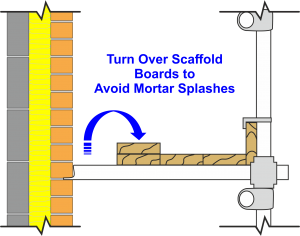
Protecting Brickwork Against Water Saturation
To avoid such damage, protect the brickwork before leaving the site or when rain is imminent.
A scaffold board or length of DPC, held in place by a few bricks, will often be sufficient.
Although it is particularly important to prevent rain from entering perforations and frogs, even solid bricks should be protected.
When severe or wind-driven rain is expected it is advisable to take more elaborate precautions
The scaffold boards nearest the brickwork should be turned back if rain is expected otherwise the wall may become stained with bands of mortar splashes which often prove impossible to remove satisfactorily.
Polythene sheeting, secured against sudden high winds by scaffold boards or bricks, is effective.
Ensure that there is enough to reach down to and protect the lower courses of the new work.
Provide means of maintaining an airspace between the polythene and brickwork as a lack of ventilation may cause condensation which can be as damaging as rain.
Most competent bricklayers protect their newly finished work but they should also remember to protect bricks stacked on the scaffold, especially if they have a low water absorbency.
Such bricks can be difficult to lay if saturated.
They tend to ‘swim’ on the mortar bed as they have little initial suction to remove water from the mortar interface.
Also the joints will cure more slowly and when ironed or struck will be of a different colour from those laid with drier bricks thus causing an apparent colour change in the brickwork.

Rain Cloud
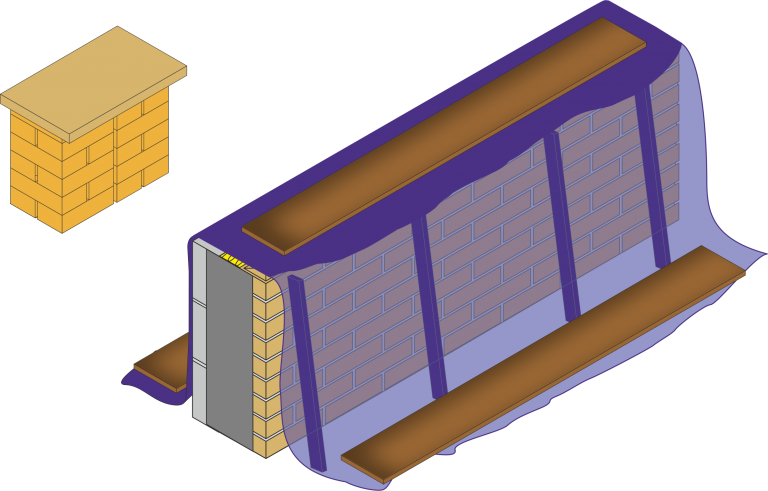
Protecting Brickwork Against Rain

Extreme Cold
If the mortar is frozen before it has time to set it will remain permanently friable and weak and have a poor bond with the bricks.
If this happens the brickwork will have to be taken down and rebuilt.
The mortar in newly built brickwork can be protected from freezing by covering with hessian which in turn should be protected by polythene sheeting from becoming wet and useless as insulation.
Alternatively, waterproofed insulating sheets will give even better protection
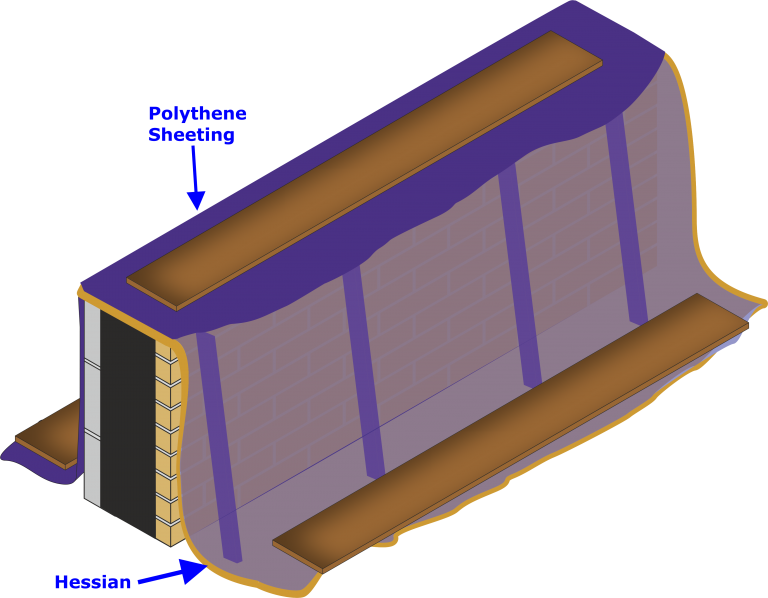
Protecting Brickwork Against Cold
In hot, sunny weather, especially with drying winds, the mortar joints may dry before the cement has set and the mortar has bonded adequately with the bricks.
This is more likely to happen with bricks of high water absorbency.
This risk can be reduced by carefully draping the brickwork with slightly damp hessian.
If the hessian is too wet it may cause staining from the joints.

Extreme Heat
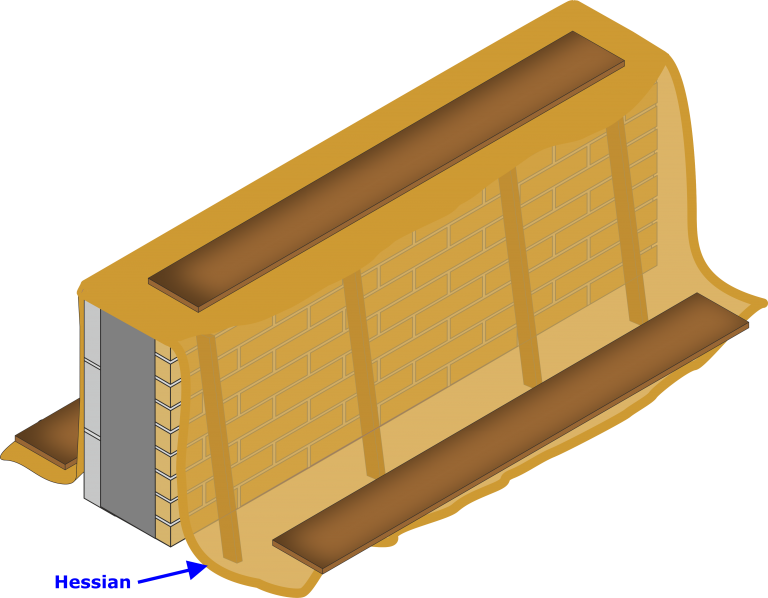
Protecting Brickwork Against Heat
Unprotected brick reveals, sills, arches, thresholds, steps and plinth courses may suffer accidental mechanical damage from building plant or people.
Such damage is not only expensive but often impossible to repair without leaving permanent scars.
Protect such features with strips of plywood or hardboard or in the case of plinths with polythene sheeting
Whose Responsibility?
Site supervisors are responsible for providing protective materials and for giving instructions for their use.
But
Ultimately it is the bricklayer’s responsibility, as the person on the spot whose work is at risk, to provide timely and effective protection.
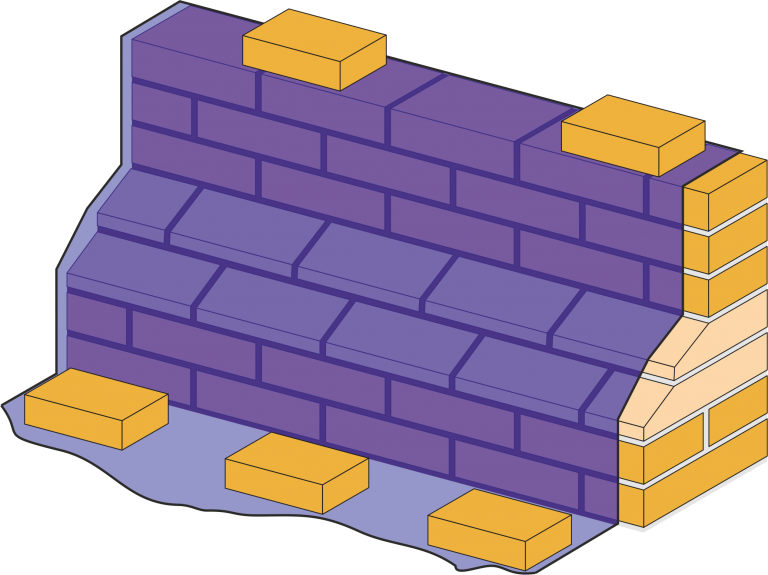
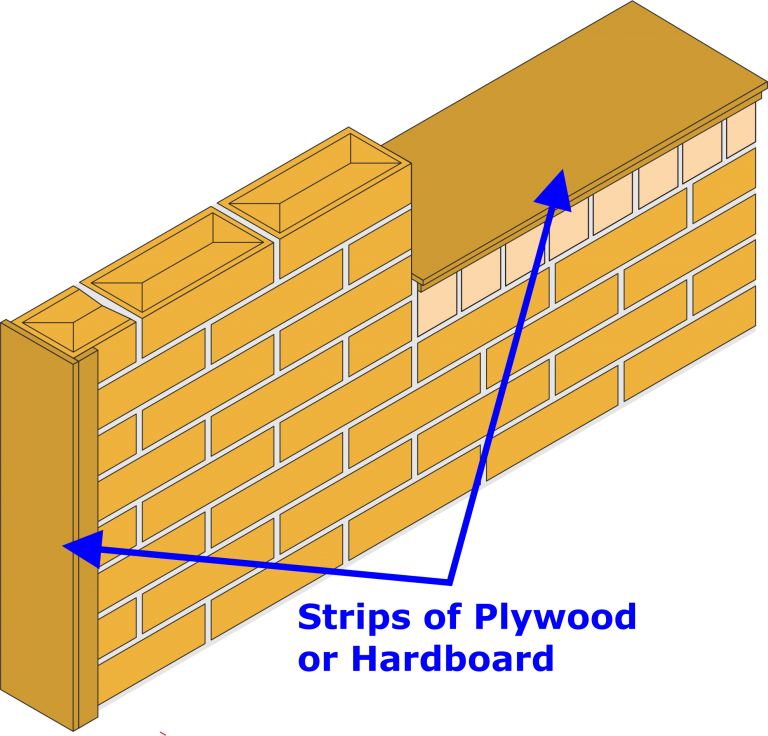

Key Points to Remember
• Always protect newly laid brickwork from rain.
• Protect it from frost in winter
• Protect it from drying out quickly in hot weather
• Leave air space between protective sheeting and brickwork.
• Turn back the first scaffold board if rain is likely.
• Protect vulnerable brickwork from damage by people and plant.